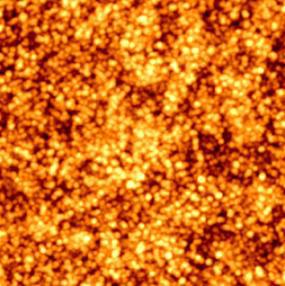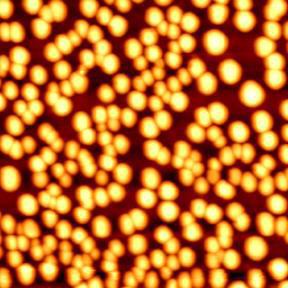Characterization of Organic Photovoltaic Cells
Thin Film of MDMO-PPV: PCBM for Organic Solar Cells Used as an Electro-Optical Device

Figure 1. Microstructures of spin-coated 1:4 MDMO-PPV:PCBM thin films from a chlorobezene solution (7 μm scan size). Courtesy of Dr. Jun Seok Lee and Prof. Changmo Sung, Univ. of Mass., Lowell.
The electro-optical industry is pursuing the benefits of low weight flexible polymers in the development of solar cells. One of the most reliable photovoltaic structures is the bulk hetero-junction organic solar cell. Current organic optical devices are based on a soluble fullerene derivative (PCBM) as an electron acceptor and an alkoxy-poly (p-phenylenevinylene) derivative (MDMO-PPV) as a donor. The microstructure of MDMO-PPV:PCBM blends, used in bulk hetero-junction organic solar cells, was studied using the Park AFM to image the surface morphology and to disclose the nanostructure of the film. Typical thin films consist of a 1:4 ratio by weight of MDMO-PPV and PCBM, a soluble electron accepting C60 derivative. A two-phase system was observed that consisted of PCBM-rich domains embedded in a matrix consisting of a mixture of MDMO-PPV and PCBM. We can clearly compare the different PCBM-rich particles between Figures 1 and 2. It has been proven that the change of solvent influences the size of the phase separated PCBM-rich domains. Based on topography information using NC-AFM, the size of particles spin-coated from chlorobenzene was determined to be around 15 nm, in contrast to roughly 100 nm when toluene was used as the solvent.

Figure 2. Microstructures of spin-coated 1:4 MDMO-PPV:PCBM thin films from a toluene solution (20 μm scan size).
